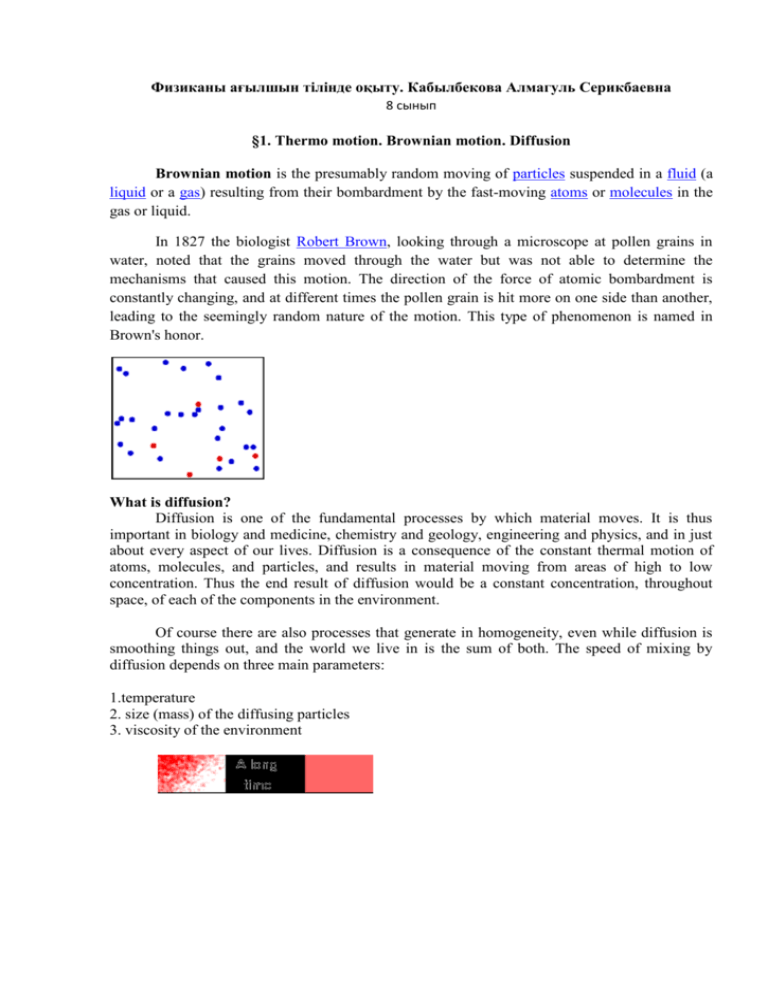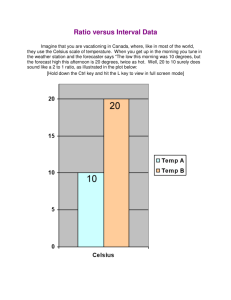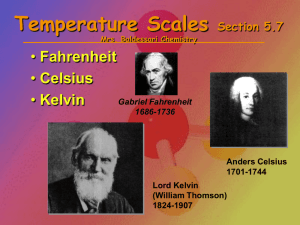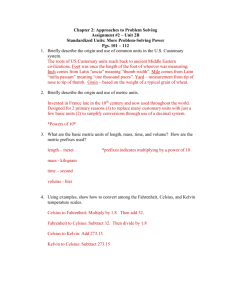Физиканы ағылшын тілінде оқыту. Кабылбекова Алмагуль
advertisement

Физиканы ағылшын тілінде оқыту. Кабылбекова Алмагуль Серикбаевна 8 сынып §1. Thermo motion. Brownian motion. Diffusion Brownian motion is the presumably random moving of particles suspended in a fluid (a liquid or a gas) resulting from their bombardment by the fast-moving atoms or molecules in the gas or liquid. In 1827 the biologist Robert Brown, looking through a microscope at pollen grains in water, noted that the grains moved through the water but was not able to determine the mechanisms that caused this motion. The direction of the force of atomic bombardment is constantly changing, and at different times the pollen grain is hit more on one side than another, leading to the seemingly random nature of the motion. This type of phenomenon is named in Brown's honor. What is diffusion? Diffusion is one of the fundamental processes by which material moves. It is thus important in biology and medicine, chemistry and geology, engineering and physics, and in just about every aspect of our lives. Diffusion is a consequence of the constant thermal motion of atoms, molecules, and particles, and results in material moving from areas of high to low concentration. Thus the end result of diffusion would be a constant concentration, throughout space, of each of the components in the environment. Of course there are also processes that generate in homogeneity, even while diffusion is smoothing things out, and the world we live in is the sum of both. The speed of mixing by diffusion depends on three main parameters: 1.temperature 2. size (mass) of the diffusing particles 3. viscosity of the environment §2. Temperature. Temperature measurement. What is temperature? Temperature is a degree of hotness or coldness the can be measured using a thermometer. It's also a measure of how fast the atoms and molecules of a substance are moving. Temperature is measured in degrees on the Fahrenheit, Celsius, and Kelvin scales. Temperature is measured with thermometers that may be calibrated to a variety of temperature scales. In most of the world, the Celsius scale is used for most temperature measuring purposes. Most scientists measure temperature using the Celsius scale and thermodynamic temperature using the Kelvin scale, which is the Celsius scale offset so that its null point is 0K = −273.15°C, or absolute zero. The basic unit of temperature in the International System of Units (SI) is the kelvin. It has the symbol K. For everyday applications, it is often convenient to use the Celsius scale, in which 0°C corresponds very closely to the freezing point of water and 100°C is its boiling point at sea level. Because liquid droplets commonly exist in clouds at sub-zero temperatures, 0°C is better defined as the melting point of ice. In this scale a temperature difference of 1 degree Celsius is the same as a 1kelvin increment, but the scale is offset by the temperature at which ice melts (273.15 K). In the United States, the Fahrenheit scale is widely used. On this scale the freezing point of water corresponds to 32 °F and the boiling point to 212 °F.

![Temperature Notes [9/22/2015]](http://s3.studylib.net/store/data/006907012_1-3fc2d93efdacd086a05519765259a482-300x300.png)



